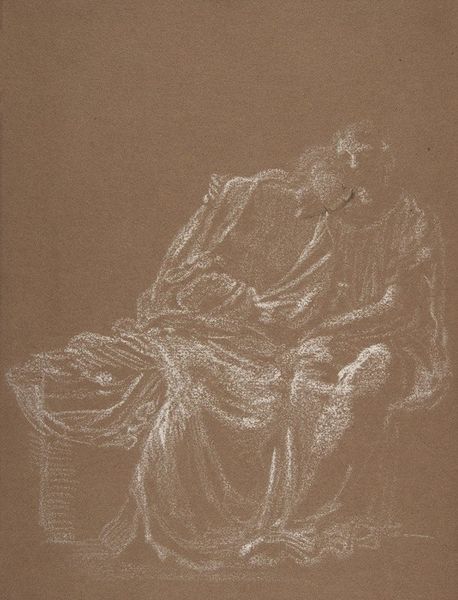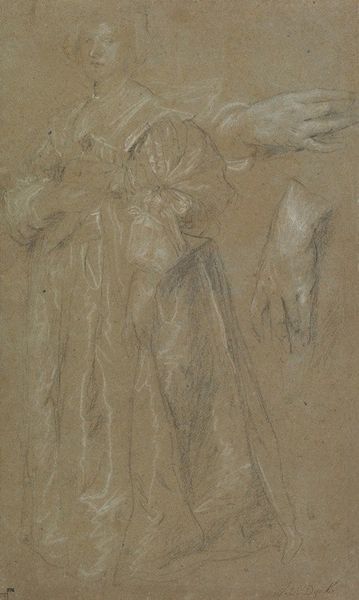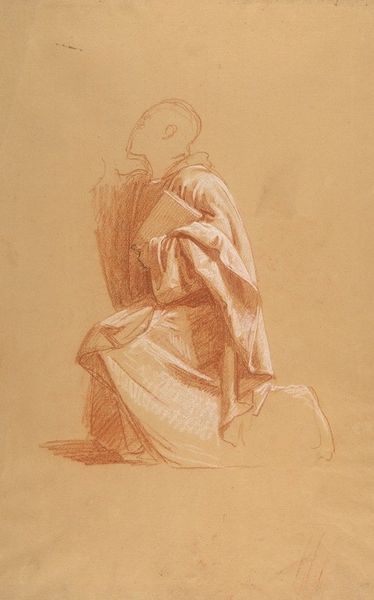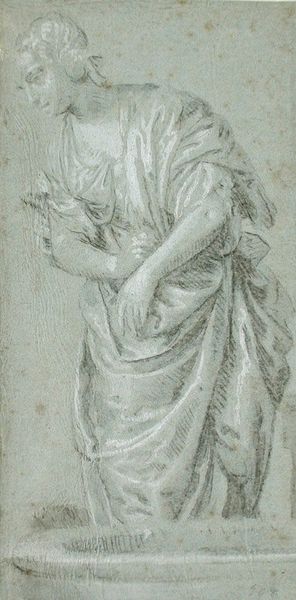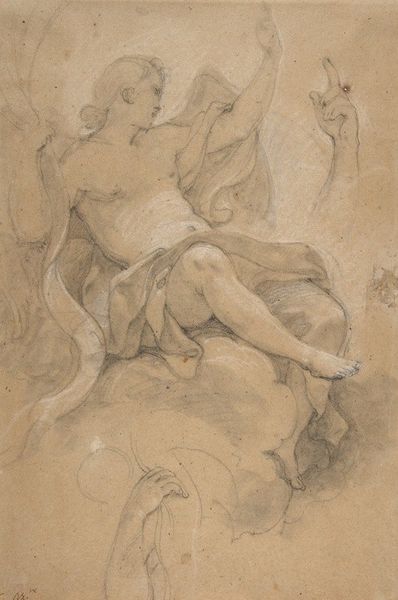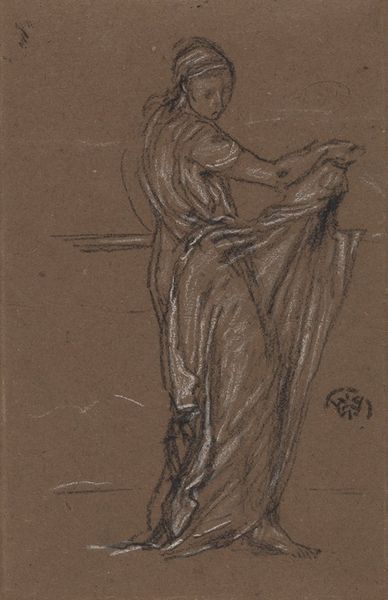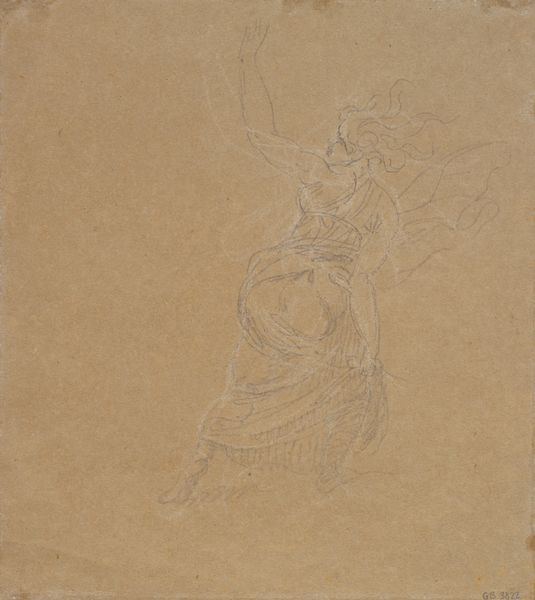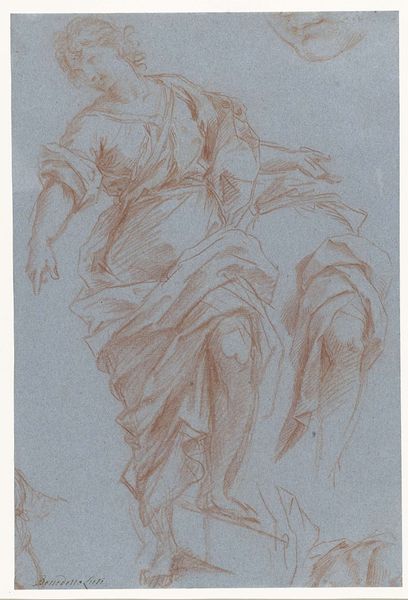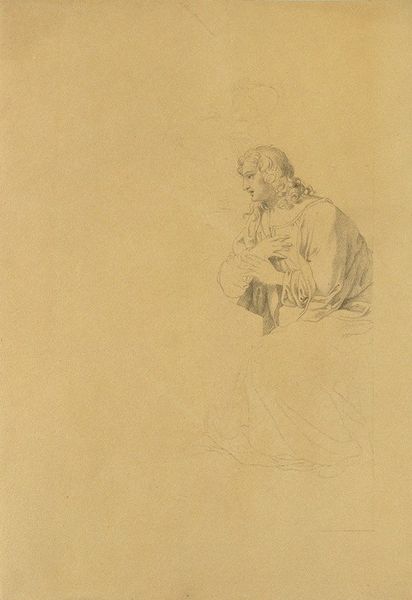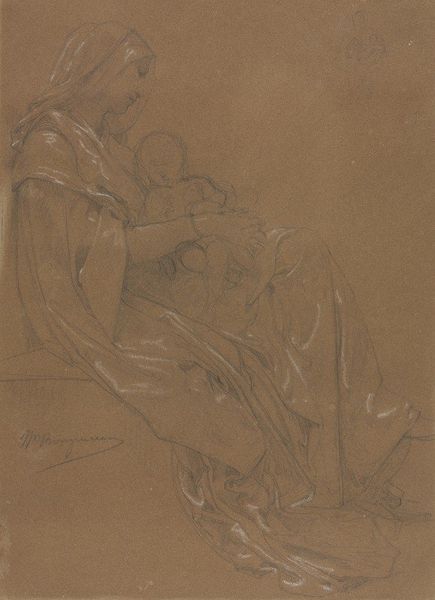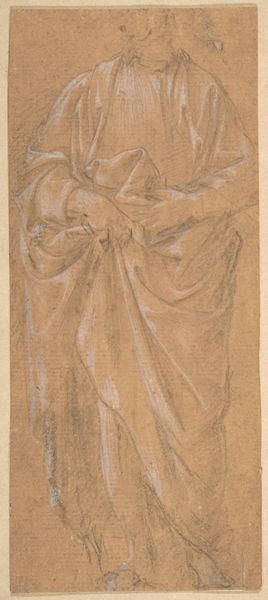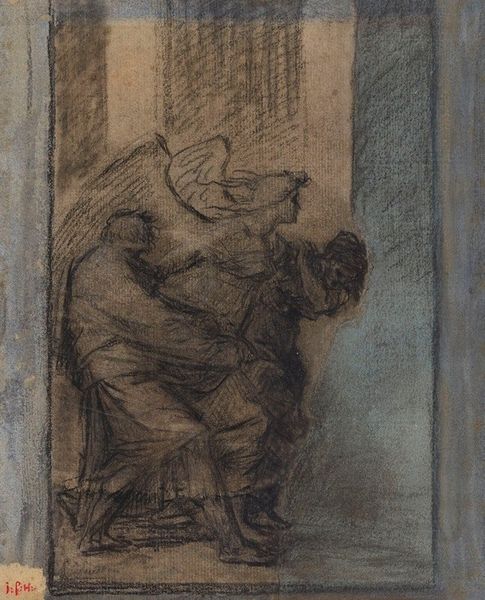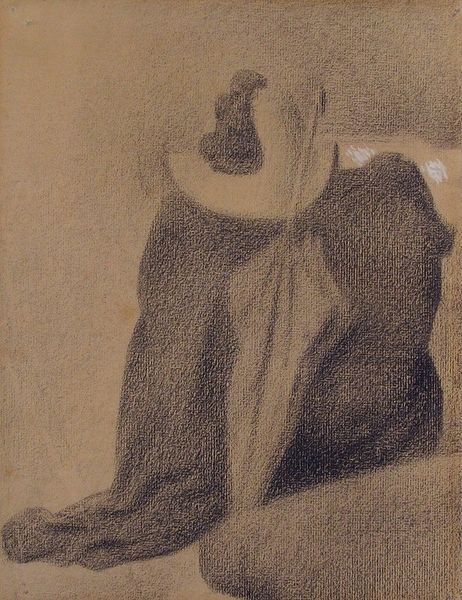
Copyright: Public Domain: Artvee
Edward Burne-Jones created "Three Figures" using white chalk on brown paper. Instantly, the delicate chalk lines suggest a realm of ethereal beings, draped in classical robes. The composition balances a solitary, standing figure on the left against a pair of figures intertwined on the right. There's a fascinating tension between the solidity of the forms and the ephemeral quality of the chalk medium. The figures almost emerge from the paper, as if caught between worlds. Burne-Jones was deeply influenced by the Pre-Raphaelites' interest in medievalism and symbolism. The use of line is particularly striking: the white chalk not only defines the figures but also creates a sense of light and movement. This treatment of line is a key element that gives the drawing its unique aesthetic and intellectual resonance. It challenges fixed meanings by presenting figures that are both present and vanishing, substantial and spectral. The beauty of "Three Figures" lies not just in its aesthetic qualities, but also in the way it invites us to contemplate the nature of representation itself. It is through this interplay of form and idea that Burne-Jones makes a statement about the relationship between art, perception, and the construction of meaning.
Comments
No comments
Be the first to comment and join the conversation on the ultimate creative platform.
